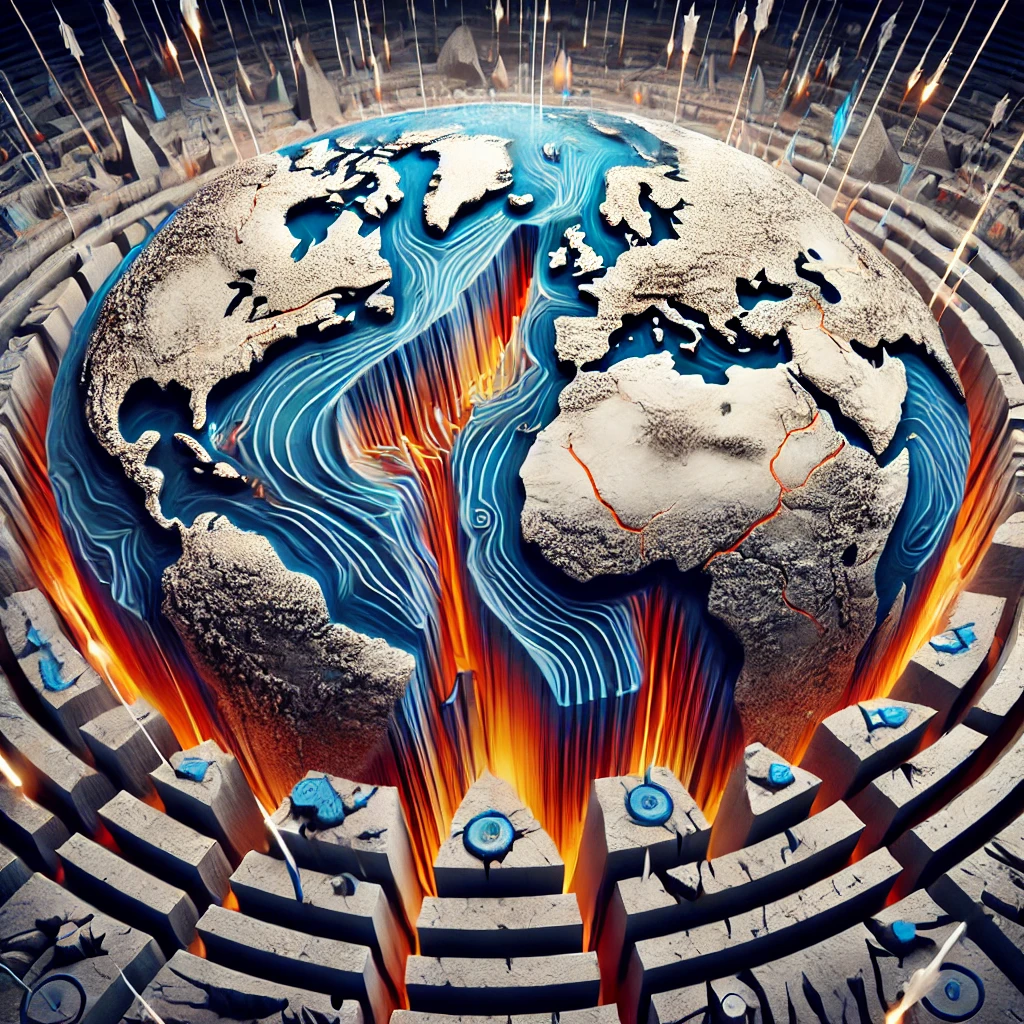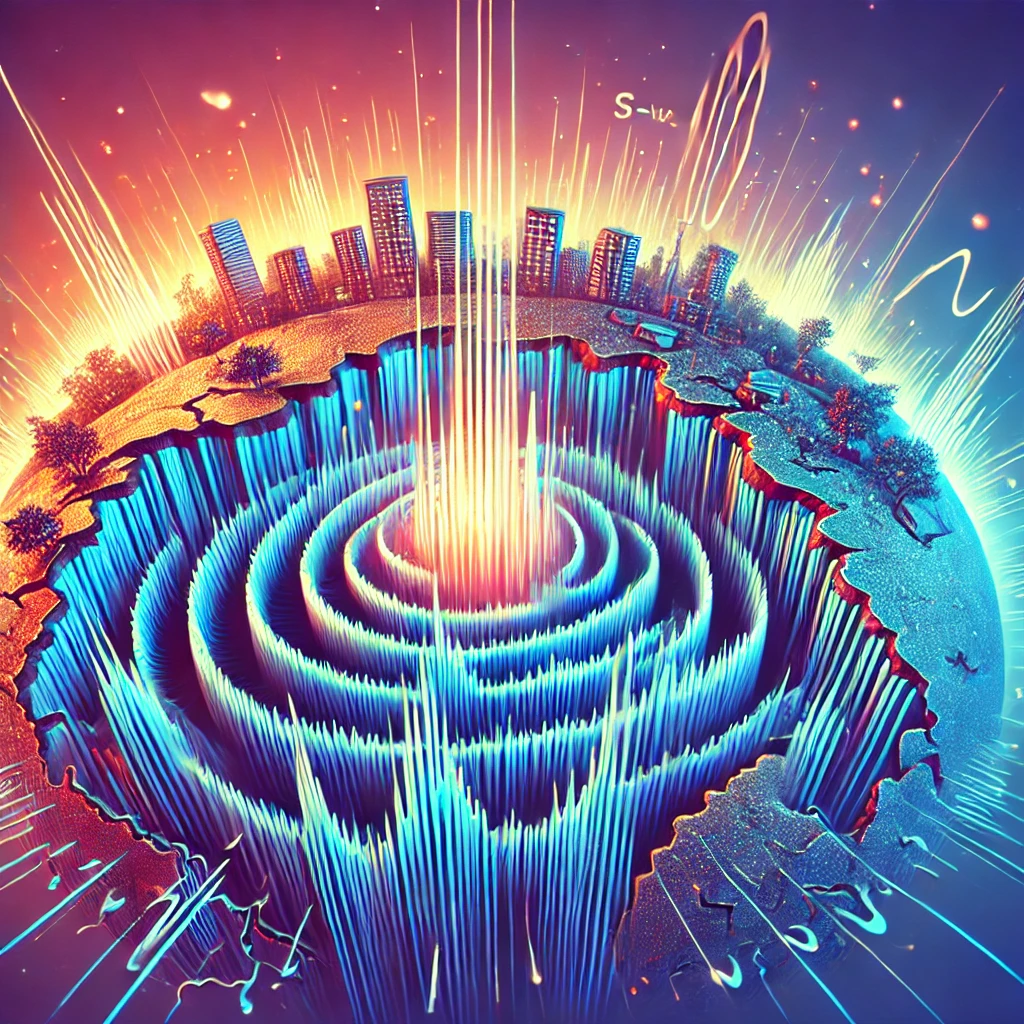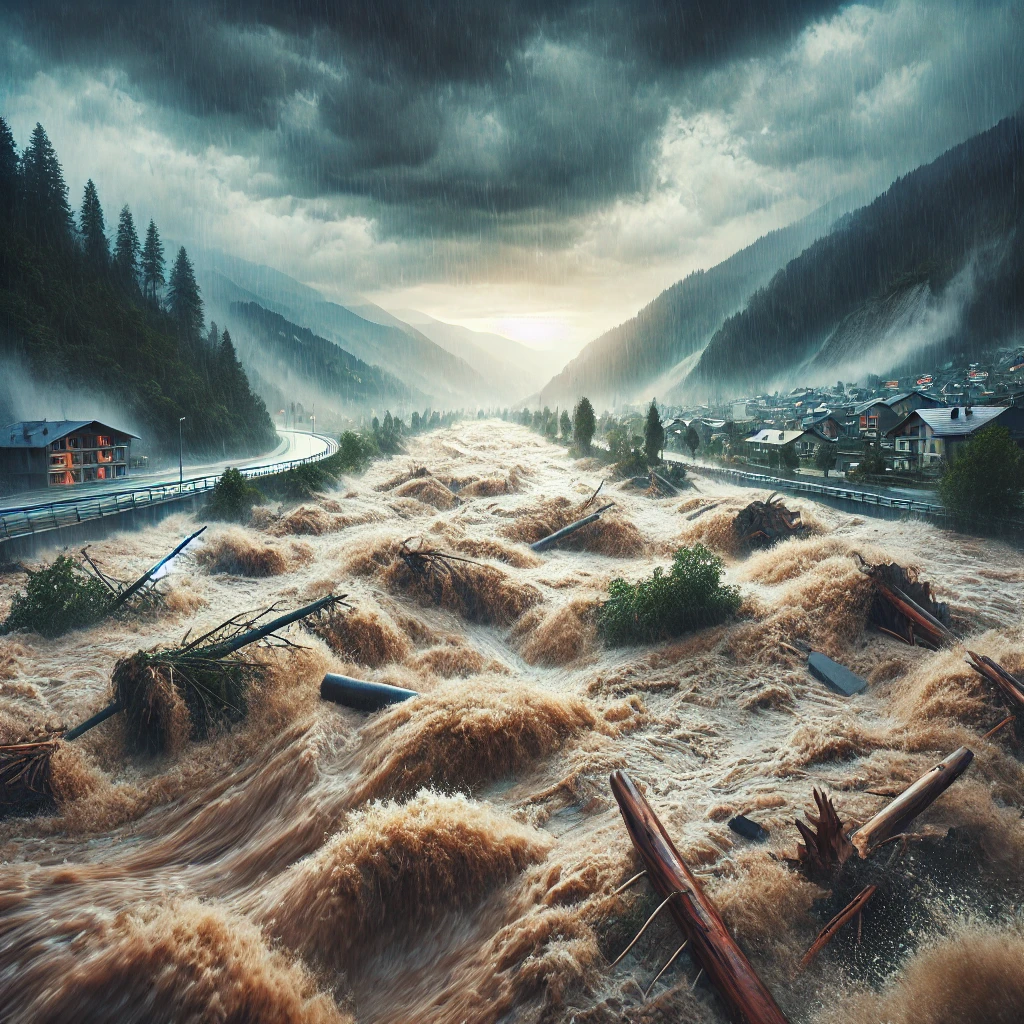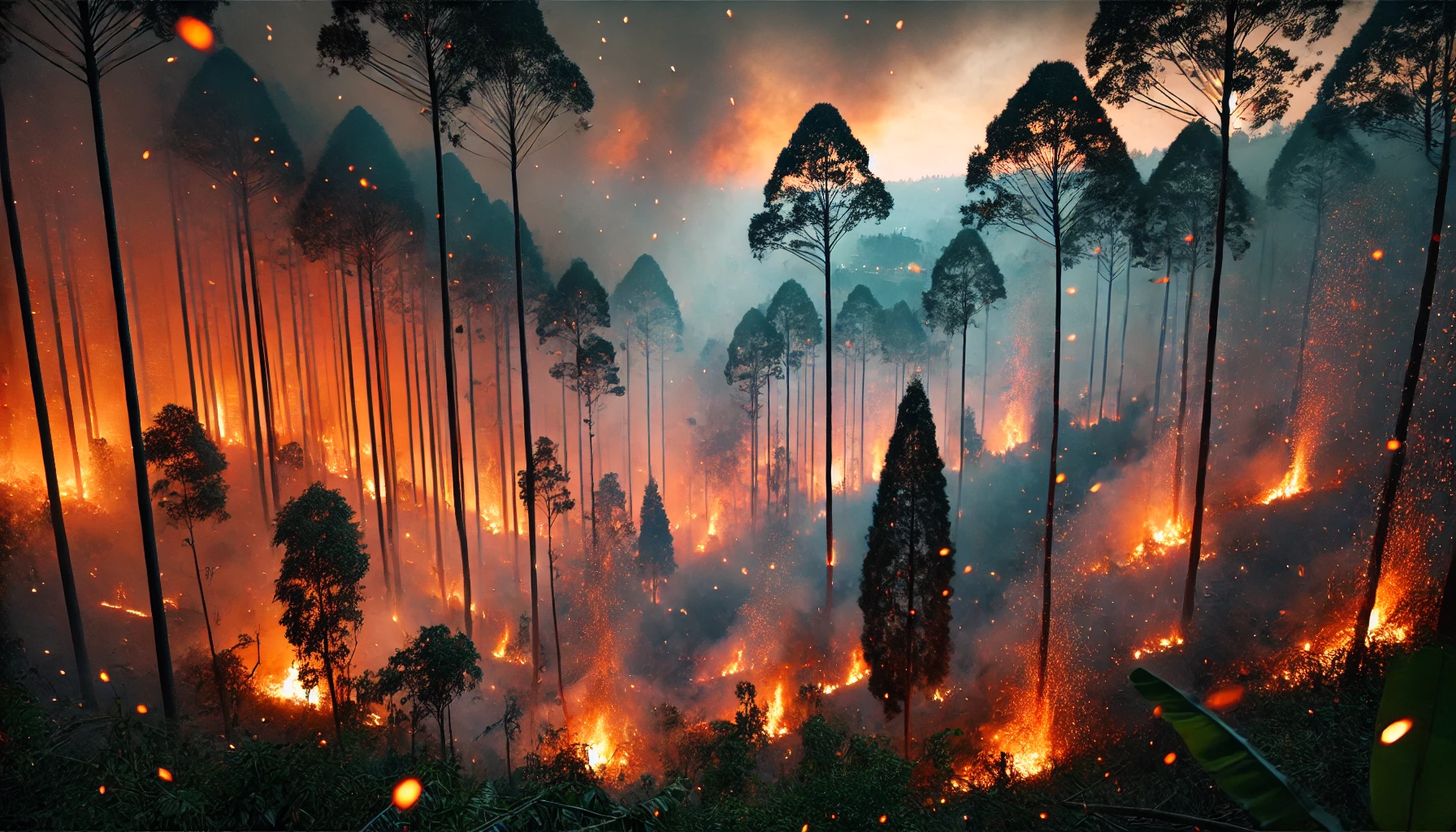Earthquakes: What Causes the Ground to Shake?
Introduction:
Earthquakes are natural phenomena that have been occurring for millions of years, causing the ground to shake and sometimes resulting in significant destruction. While we often hear about earthquakes in relation to disaster events, their underlying causes are deeply rooted in the earth’s geological processes. Understanding these processes not only explains why and how earthquakes happen but also sheds light on how scientists study and predict them.
What Are Earthquakes?
An earthquake is the sudden release of energy in the Earth’s crust that creates seismic waves. These waves cause the ground to shake, often with devastating effects. The shaking can vary from mild tremors to intense quakes, depending on the amount of energy released and the proximity of the earthquake’s epicenter (the point on the Earth’s surface directly above where the earthquake originates).
What Causes Earthquakes?
Earthquakes are primarily caused by tectonic plate movements. The Earth’s outer shell, or lithosphere, is made up of large slabs of rock called tectonic plates, which float on the semi-fluid asthenosphere below. These plates are constantly in motion, though they move very slowly, only a few centimeters per year. The interaction between these plates is responsible for most earthquakes.
1. Tectonic Plates and Their Boundaries
Tectonic plates move in different directions and at varying speeds. The boundaries where these plates meet are the most likely areas for earthquakes to occur. There are three primary types of plate boundaries, each associated with specific types of seismic activity:
- Divergent Boundaries: Plates move away from each other. This creates gaps that allow magma to rise and form new crust. Earthquakes at divergent boundaries, such as mid-ocean ridges, are generally less severe.
- Convergent Boundaries: Plates move toward each other. One plate is often forced beneath the other in a process called subduction. This movement creates significant friction, leading to powerful earthquakes, such as those along the Pacific Ring of Fire.
- Transform Boundaries: Plates slide past each other horizontally. The San Andreas Fault in California is an example of a transform boundary. Earthquakes in these regions can be very destructive.
2. Stress Accumulation and Release
As tectonic plates interact, they don’t move smoothly. Instead, they become stuck due to friction. Over time, stress builds up as the plates continue to push against or slide past each other. Eventually, the built-up stress overcomes the friction holding the plates in place, and the plates suddenly shift. This sudden movement releases energy in the form of seismic waves, causing an earthquake.
3. Earthquake Faults
The exact location where a rock breaks and shifts during an earthquake is called a fault. There are many different types of faults, including normal faults, reverse faults, and strike-slip faults, each associated with different types of plate movement.
Seismic Waves: How the Ground Shakes
The release of energy during an earthquake generates seismic waves that travel through the Earth’s crust. There are two main types of seismic waves that cause the ground to shake:
- Primary Waves (P-waves): These are the fastest seismic waves and the first to be detected by seismometers. They compress and expand the ground in the direction they are traveling, much like sound waves.
- Secondary Waves (S-waves): These waves follow P-waves and are slower but more destructive. S-waves move the ground up and down or side to side, perpendicular to their direction of travel.
After these initial waves, surface waves are generated, which travel along the Earth’s surface and are responsible for most of the damage. Surface waves cause rolling or swaying motions, making buildings and other structures vulnerable to collapse.

You May Also Like: The Phenomenon of Fog: How and Where It Forms
Human-Induced Earthquakes
While most earthquakes are caused by natural tectonic processes, human activities can also induce seismic activity. These are known as induced earthquakes and are typically smaller but can still be damaging. Some human activities that can trigger earthquakes include:
- Mining: The extraction of minerals from the Earth can cause ground instability, leading to earthquakes.
- Fracking: Hydraulic fracturing, or fracking, involves injecting high-pressure fluids into the ground to extract oil and gas. This process can alter underground pressure and trigger earthquakes.
- Reservoir-Induced Seismicity: The construction of large dams and the creation of reservoirs can increase pressure on the Earth’s crust, causing small to moderate earthquakes.
How Are Earthquakes Measured?
Earthquakes are measured using the Richter scale or the moment magnitude scale (Mw). Both scales quantify the energy released by an earthquake. The moment magnitude scale has largely replaced the Richter scale for large earthquakes because it provides a more accurate measurement.
- Magnitude: This refers to the total energy released by an earthquake. A magnitude 2.0 earthquake is typically not felt by people, while a magnitude 7.0 earthquake can cause widespread destruction.
- Intensity: While magnitude measures energy, intensity refers to how the earthquake’s shaking affects people and structures. The Modified Mercalli Intensity Scale is commonly used to describe the intensity of an earthquake based on observed effects.
Earthquake Hotspots Around the World
Certain regions are more prone to earthquakes due to their proximity to tectonic plate boundaries. Some of the most earthquake-prone areas include:
- The Pacific Ring of Fire: This horseshoe-shaped zone around the edges of the Pacific Ocean is home to about 75% of the world’s active and dormant volcanoes and 90% of its earthquakes.
- The Himalayas: The ongoing collision between the Indian and Eurasian plates makes this region highly seismically active.
- California: The San Andreas Fault is a well-known earthquake zone, where the Pacific and North American plates meet.
The Impact of Earthquakes
The destructive power of earthquakes can have a profound impact on infrastructure, communities, and economies. Ground shaking can collapse buildings, bridges, and roads, and trigger landslides, tsunamis, and fires. In regions where buildings are not earthquake-resistant, the loss of life can be catastrophic.
- Landslides: In mountainous areas, earthquakes can cause massive landslides, further endangering lives and homes.
- Tsunamis: Underwater earthquakes can displace large amounts of water, creating tsunamis that devastate coastal areas.
- Aftershocks: After the main quake, smaller tremors, known as aftershocks, can continue for days or even months. These aftershocks can cause additional damage to already weakened structures.
Can Earthquakes Be Predicted?
Scientists have made significant progress in understanding how and why earthquakes happen, but predicting the exact time and place of an earthquake is still challenging. Earthquake-prone areas are monitored using seismometers, which detect ground movement, and GPS sensors, which track plate movement.
- Early Warning Systems: In some regions, early warning systems have been developed to detect the first seismic waves and provide a few seconds of warning before the more destructive waves arrive. This short notice can be enough to stop trains, shut down power plants, and warn people to take cover.
Conclusion
Earthquakes are a natural part of the Earth’s dynamic geological processes, primarily caused by the movement of tectonic plates. While they can be devastating, understanding their causes, characteristics, and effects allows scientists to study them more effectively and helps communities better prepare for when the ground begins to shake. With continued advancements in seismic research, humanity’s ability to mitigate earthquake risks and enhance preparedness is improving, though the unpredictability of these powerful natural events remains a challenge.
Also Visit: The Importance of Emergency Funds: How to Build One




1 comment